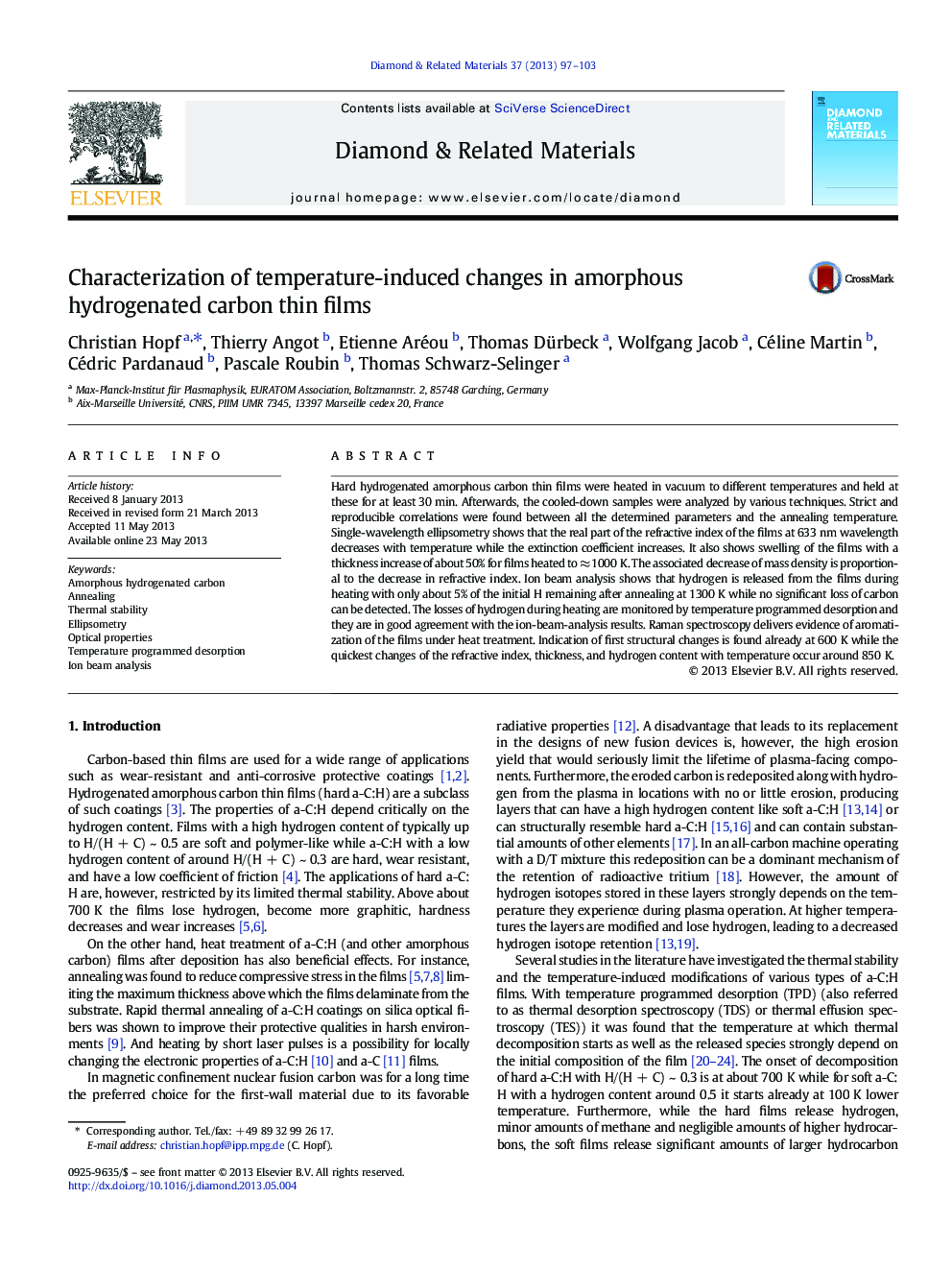| Article ID | Journal | Published Year | Pages | File Type |
|---|---|---|---|---|
| 700746 | Diamond and Related Materials | 2013 | 7 Pages |
•We characterize initially identical a-C:H(D) films after annealing at up to 1300 K.•First structural changes are observed already at 600 K in Raman G peak position.•Above ~ 700 K hydrogen is lost and the refractive index at 633 nm decreases.•A thickness increase of more than 40% is observed at around 1000 K.•The associated density decrease and decrease in refractive index are proportional.
Hard hydrogenated amorphous carbon thin films were heated in vacuum to different temperatures and held at these for at least 30 min. Afterwards, the cooled-down samples were analyzed by various techniques. Strict and reproducible correlations were found between all the determined parameters and the annealing temperature. Single-wavelength ellipsometry shows that the real part of the refractive index of the films at 633 nm wavelength decreases with temperature while the extinction coefficient increases. It also shows swelling of the films with a thickness increase of about 50% for films heated to ≈ 1000 K. The associated decrease of mass density is proportional to the decrease in refractive index. Ion beam analysis shows that hydrogen is released from the films during heating with only about 5% of the initial H remaining after annealing at 1300 K while no significant loss of carbon can be detected. The losses of hydrogen during heating are monitored by temperature programmed desorption and they are in good agreement with the ion-beam-analysis results. Raman spectroscopy delivers evidence of aromatization of the films under heat treatment. Indication of first structural changes is found already at 600 K while the quickest changes of the refractive index, thickness, and hydrogen content with temperature occur around 850 K.
